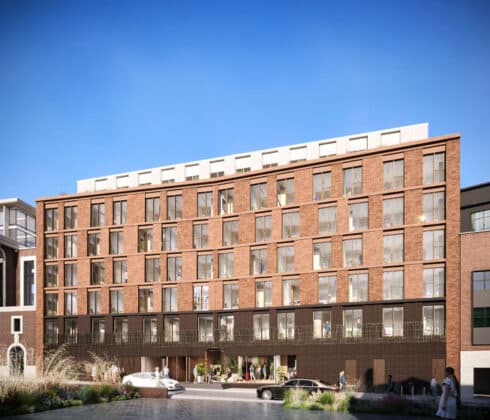McLaren Leeds student accommodation scheme funded by Ares Management Funds and Generation Partners

McLaren Leeds student accommodation scheme funded by Ares Management Funds and Generation Partners
McLaren Property’s Leonardo and Thoresby buildings Leeds student accommodation scheme has been funded by funds managed by the Real Estate Group of Ares Management (“Ares”) and Generation Partners, who will also acquire the completed development.
The 473-bed scheme, which consists of the refurbished and listed buildings in the Civic Quarter of Leeds City Centre as well as a new build block, will be completed in 2023.
Work on the development will commence this month, with Robertson Construction appointed as contractor for the Cartwright Pickard-designed scheme.
The new student accommodation will be within five to ten minutes’ walk of The University of Leeds, Leeds Beckett and Leeds Teaching Hospital. It will provide a premium live-study lifestyle in an area of high demand from students.
Wilson Lamont, Partner and Co-Head of European Real Estate Equity in the Ares Real Estate Group said: “Student accommodation is a key growth sector for Ares. The unique McLaren development is in one of Britain’s leading regional cities with a thriving student population and fits well within our strategy.”
Tom, Gilman, regional managing director of McLaren Property, said: “It’s great to be working with Ares and Generation Partners on this prime student development in Leeds city centre, which further enhances our significant track record in the student accommodation sector.
All parties have worked collaboratively to conclude this transaction in a very short time. The Leonardo and Thoresby buildings development also builds on McLaren Property’s commitment to Leeds, where we are also excited to be working with the city council on planned commercial and build to rent projects in Wellington Street, also in the city centre.
Within the Leonardo and Thoresby House buildings, re-purposing of the listed elements as well as re-use of the modern building structure substantially reduces the embodied carbon of the new development. Operational carbon emissions are minimised through connection to the city council’s low carbon district heating system.


